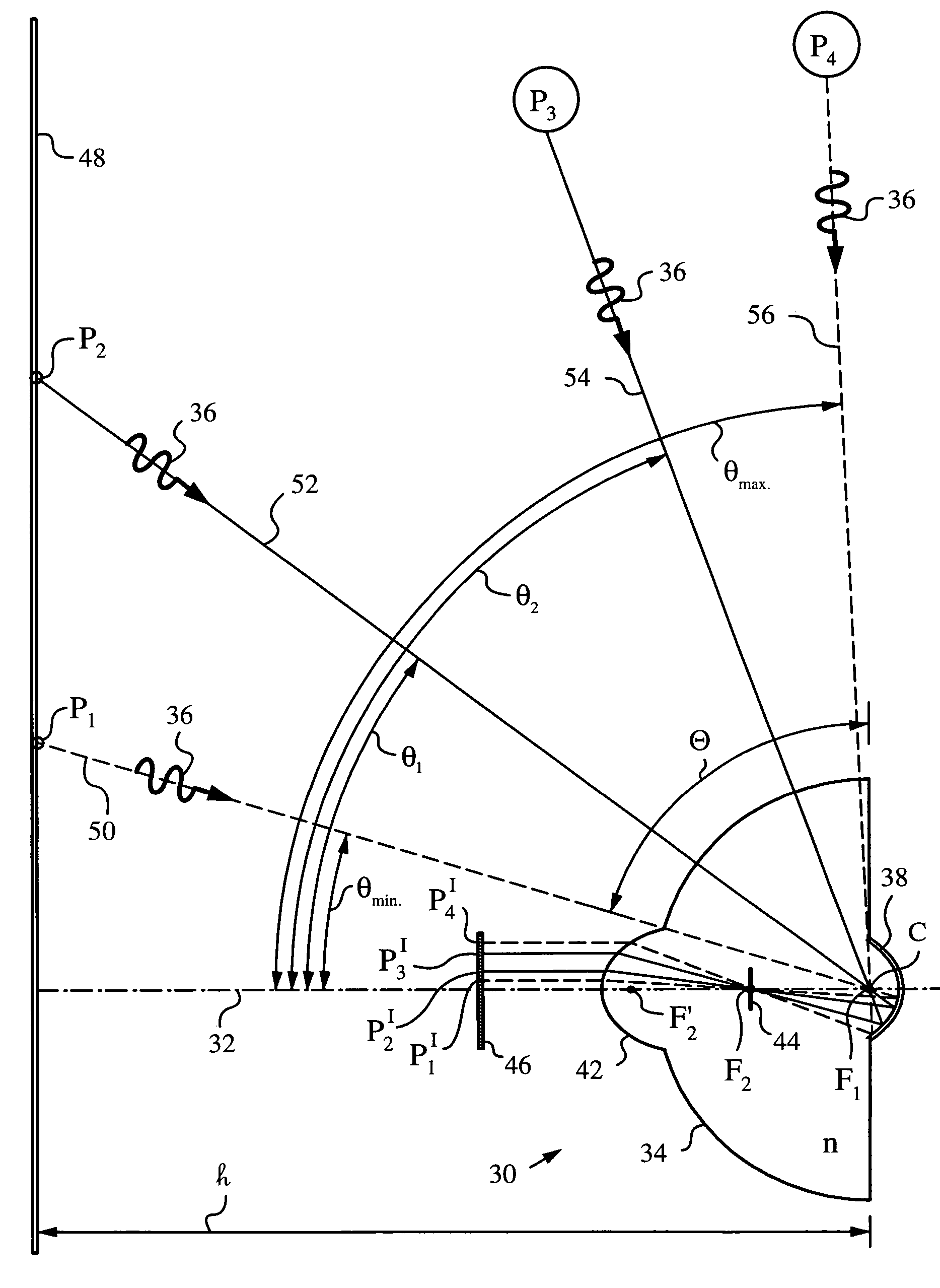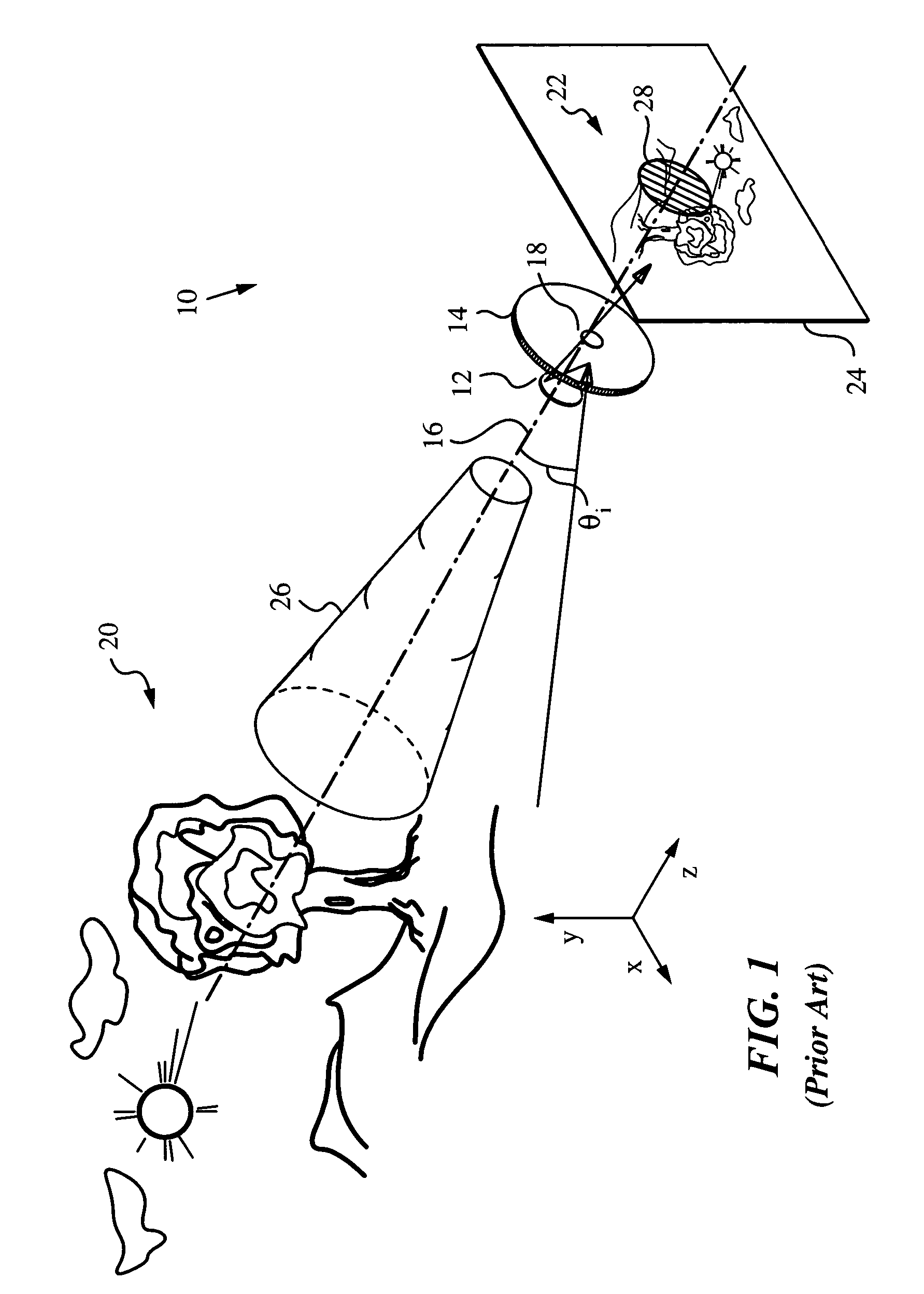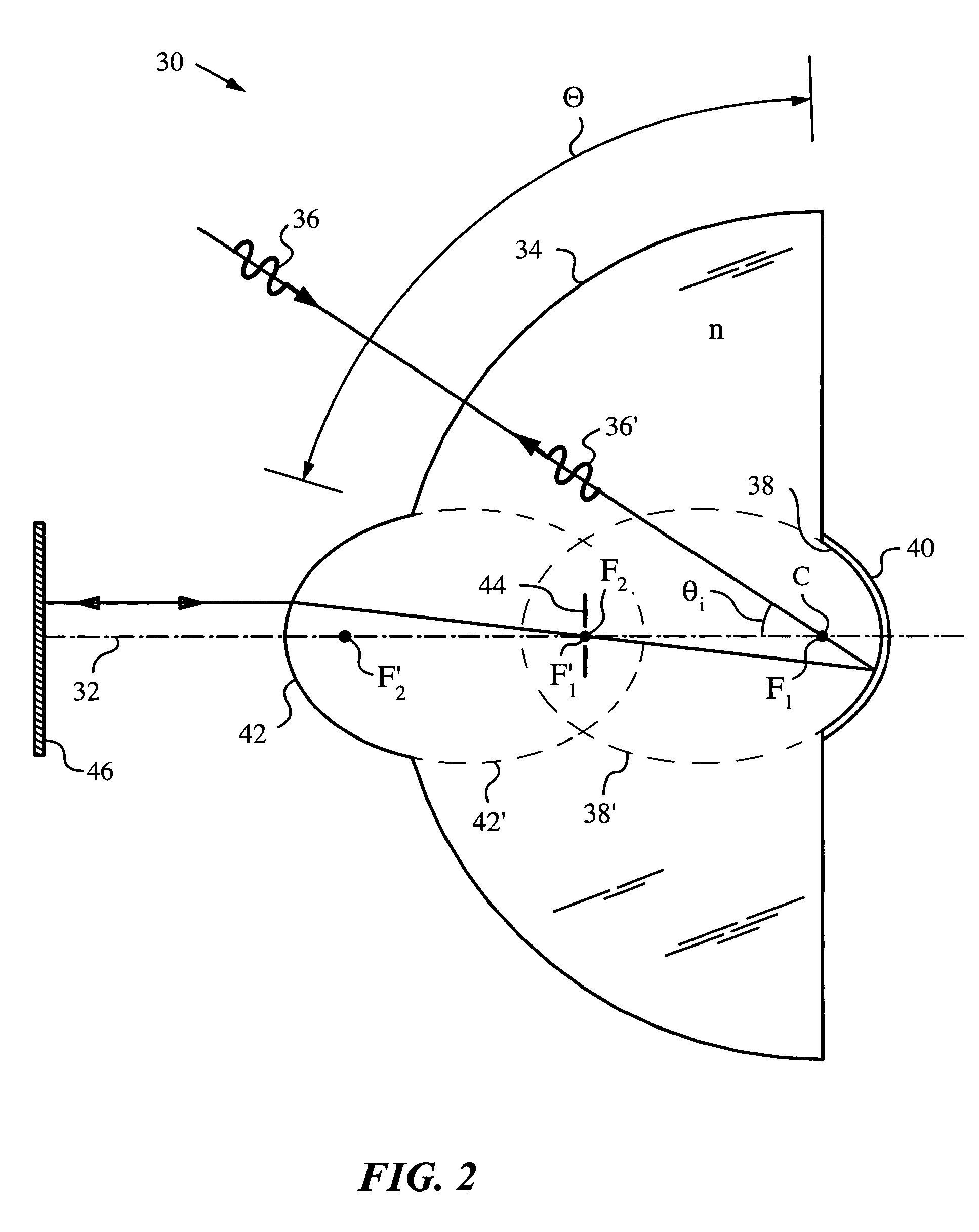Solid catadioptric lens with a single viewpoint
a catadioptric lens and single viewpoint technology, applied in the field of lenses, can solve the problems of cumbersome, expensive and large, and the limited range of catadioptric zoom relay telescopes and lens assemblies, and achieve the effects of compactness, ruggedness and effective
- Summary
- Abstract
- Description
- Claims
- Application Information
AI Technical Summary
Benefits of technology
Problems solved by technology
Method used
Image
Examples
Embodiment Construction
[0032]The present invention will be best understood by first referring to an embodiment of a single viewpoint solid catadioptric lens 30 as shown in FIG. 2 in cross-sectional side view. Lens 30 has an optical axis 32 and is made of an optical material of index n. Preferably, the optical material is uniform and exhibits substantially no or very little variation of index n. Suitable materials include glasses and plastics, such as moldable plastics and other optical materials.
[0033]Lens 30 has a spherical refractive surface 34 with a center C on optical axis 32. A light 36 propagating to and a light 36′ propagating from center C traverses spherical refractive surface 34 at normal incidence. Spherical refractive surface 34 defines a solid angle Θ over which lens 30 gathers light 36 and into which lens 30 projects light 36′.
[0034]Lens 30 has an ellipsoidal reflective surface 38 facing spherical refractive surface 34. Ellipsoidal reflective surface 38 can be made reflective by providing i...
PUM
 Login to View More
Login to View More Abstract
Description
Claims
Application Information
 Login to View More
Login to View More - R&D
- Intellectual Property
- Life Sciences
- Materials
- Tech Scout
- Unparalleled Data Quality
- Higher Quality Content
- 60% Fewer Hallucinations
Browse by: Latest US Patents, China's latest patents, Technical Efficacy Thesaurus, Application Domain, Technology Topic, Popular Technical Reports.
© 2025 PatSnap. All rights reserved.Legal|Privacy policy|Modern Slavery Act Transparency Statement|Sitemap|About US| Contact US: help@patsnap.com



